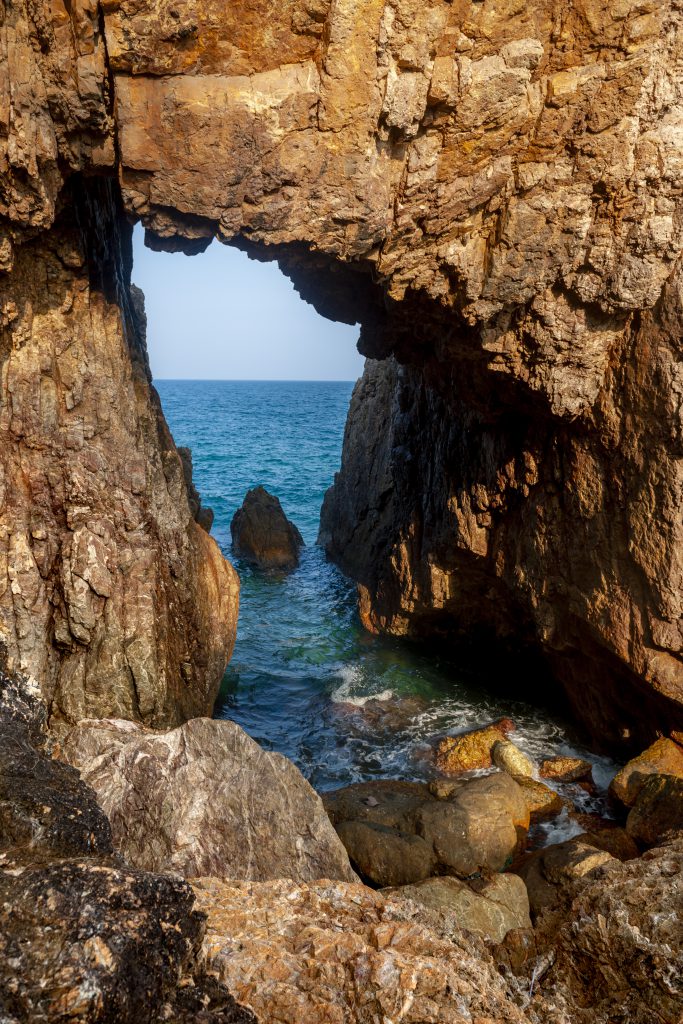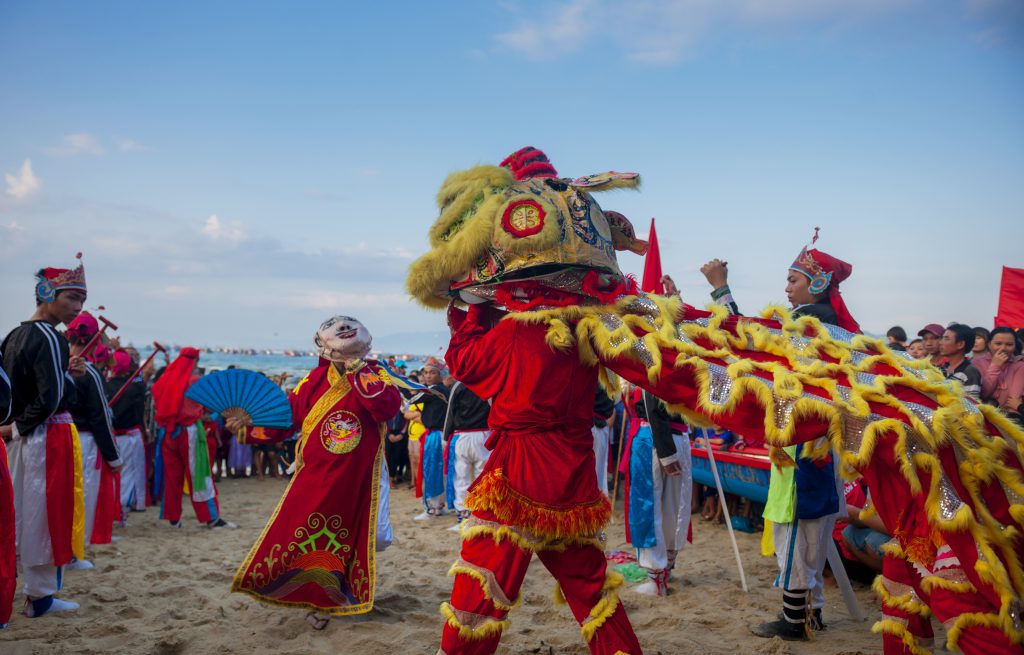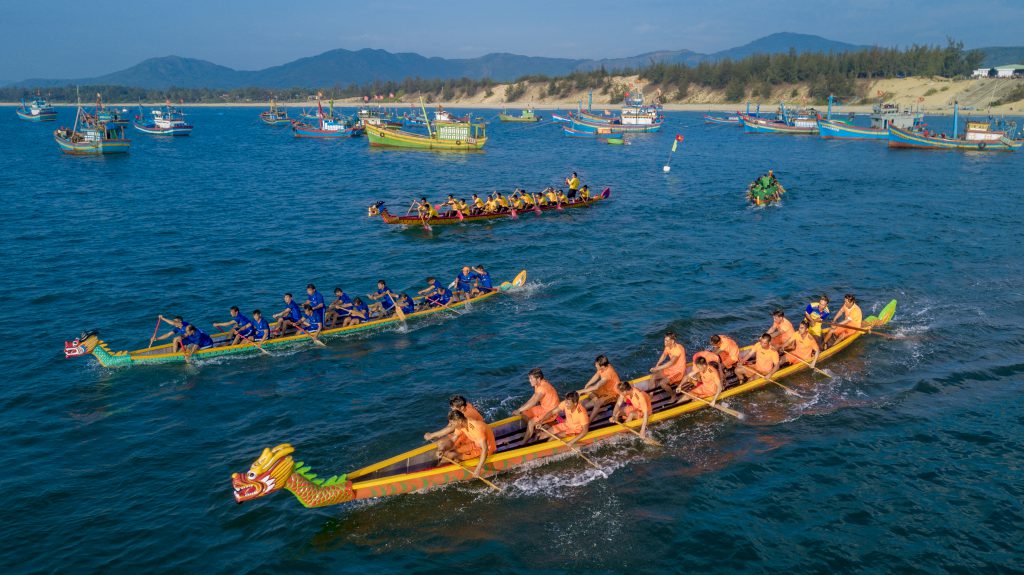Hoa Tra
Majestic Mui Rong, or Dragon’s Cape, is one of the best-kept secrets in Central Vietnam
If you’ve fallen in love with wild mountain trails, blue seas, and white sands in Binh Dinh, you should venture another 70 kilometers from Quy Nhon City to Mui Rong – the Dragon’s Cape. Not yet featured on foreign tourist maps of Central Vietnam, this destination will win the hearts of those who love vast skies and the ocean.

A rocky dragon
Even now, local people in Mui Rong recount a legend about a feng shui master from the neighboring country who received an order to seal off areas with strong qi. On his travels, he found a “long mach” (dragon’s vein) in the region’s sea cliffs. Using feng shui techniques, the master cut off the qi and injured the dragon, causing its blood to flow out and its scales to fall off. This event dyed the surrounding rocks crimson, making them stand out even more against the white sand. Strangely, through the ebb and flow of the tides, the rocks’ color deepened, hence the birth of the name “Mui Rong”. However, some believe that the name comes from the cape’s shape – said to resemble a powerful dragon guarding the sea, land, and sky for nearby fishermen, when seen from afar. Every time the tide rises and waves strike the cliffs, dazzling white water seems to gush from the dragon’s mouth.

Untouched nature
In this land of white sand and crystal clear ocean, Mui Rong stands out. Still a rather unknown destination, the region’s untouched scenery will appeal to those who love nature. Traveling to the cape, which is located at Tan Phung Hamlet, My Tho Village, Phu My Town, you will pass a tranquil yet lively fishing village. Here, simple houses cluster to form a village with 300 years of history, where you can observe the daily lives of coastal people. Barefoot children play happily. Women untangle fishing nets. Rowdy men exchange tales of their trips offshore. The local accent may make it hard to understand these people, but their eyes and smiles speak of sincerity and generosity. I mentioned wanting to go to Mui Rong after talking to a group of children, only to have them follow me to the cape. They gestured wildly toward the sea – where all zigzagging trails from the village lead.

In Tan Phung Hamlet, there are two beaches. The inner one is used as a fishing dock, while the outer beach is for swimming, thanks to its shallow water and long stretch of sand. Reaching Mui Rong requires a hike, but once you get there, you will be welcomed by a boundless blue sky and salty air. At the top of the cape, I forgot all my daily concerns, lulled by the sun, wind, and sounds of the ocean waves, mixed with the playful children’s chattering.
The Whale Worship Festival
The Whale Worship Festival is a time-honored and distinctive custom of fishermen in Vietnam’s Central and Southern Regions. People in Tan Phung often organize the festival in mid-April of the lunar calendar at the mausoleum of Ong Nam Hai (the Southern Sea God). During the festival, people pay respect to the village’s founders and pray to the gods for bountiful hauls of fish and fine weather. This custom has been passed through generations, and is regarded as one of the most important communal activities by citizens of Tan Phung – Mui Rong. The festival is also a grand display of traditional coastal cultures, with sacrificial rituals, boat races, “hat boi” (Vietnamese opera), etc., as well as old games that have endured for generations.

Sincere prayers for a smooth year ring out along with constant cheers for boat-races, basket-shaking contests, tug of war games, etc. Through the festival, friendships formed during long fishing trips are cemented, and neighbors in this peaceful fishing village are bound more closely together.










